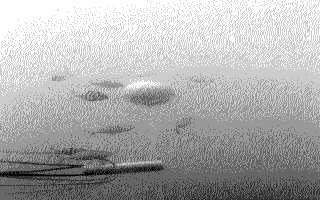
Navigate toolbar: [ Fish Diets | My Photos | Estuarine Research | FADs | Soniferous Fish | My CV | My Youtube | Children's Stories | Fish Facts | My Writings | Home Page ]
Fish Aggregation Devices: FADs
Archived pageThis page contains a few sample underwater photographs of fishes associated with fish aggregation devices (FADs). They were taken by Mel Bell and Steve Murphey during my MS Thesis research on FADs. See my CV for related publications and seminars
I was testing the hypothesis that fish abundance associated with FADs are not influenced by structure size or complexity (Rountree 1989). I tested this by comparing recruitment to three sizes of mid-water FADs. FAD size was controlled by linearly increasing the number of subunits suspended beneath the float (1,2 or 4 units). I also examined the community ecology of pelagic and benthic fishes attracted to the structure (Rountree 1990).

Photograph of yellow jack, Caranx bartholomaei, and banded rudderfish, Seriola zonata,associated with FAD size 1 after 17 days.
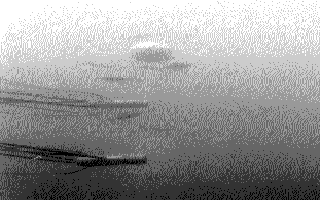
Photograph of yellow jack, Caranx bartholomaei, and banded rudderfish, Seriola zonata,associated with FAD size 2 after 17 days.
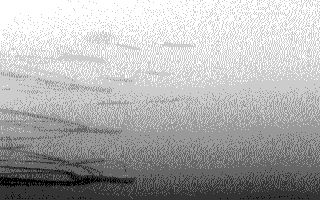
Photograph of round scad, Decapterus punctatus, associated with FAD size 4 after 17 days.
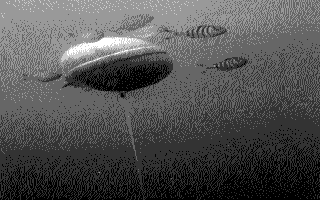
Close up of yellow jack, Caranx bartholomaei, and banded rudderfish, Seriola zonata,associated with FAD float 17 days after d eployment.
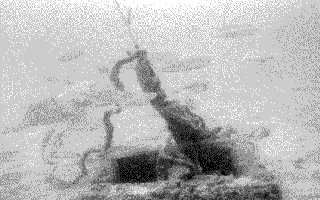
Close ups of concrete block used to anchor FADs: with round scad, Decapterus punctatus and bank sea bass, Centropristis ocyurus (on block near cross-piece).
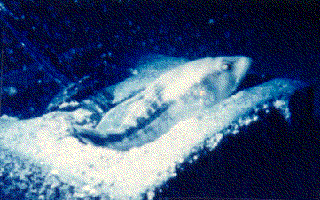
Close up of a large black sea bass, Centropristis striata , living in a FAD anchor.
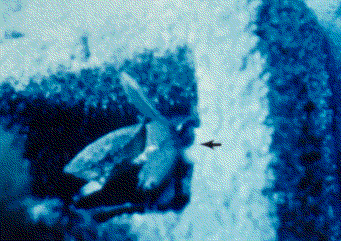
Close up of adult stone crab, Menippe mercenaria, living within a FAD anchor. The arrow points to a moon snail, Polinices sp., which the stone crab is storing for food. A juvenile sand perch, Diplectrum formosum can also be seen just above the crab.
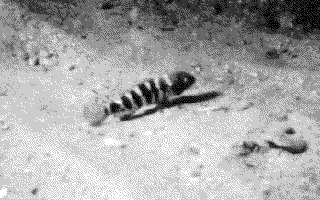
Close up of juvenile bank sea bass (about 2 inches long), Centropristis ocyurus, associated with a FAD anchor.
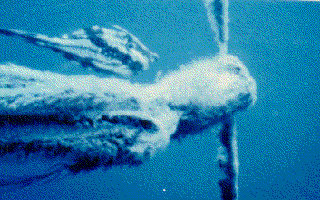
Close up of a scrawled filefish, Aluterus scriptus, closely associated with a FAD.
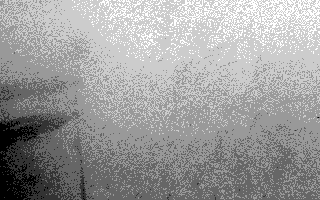
School of round scad, Decapterus punctatus, associate up current of a FAD. The school is already beginning to react to the divers and will ball-up around the FAD, but the basic shape of the undisturbed school can still be seen. It was observations like these that led George Sedberry and I to develop our Visual Field Overlap model of schooling behavior (Rountree and Sedberry 1997).
Related papers
Rountree, R.A. 1987. Ecology of the association of fishes with fish aggregation devices (FADs):
Importance of structural complexity, with a discussion of the association of fishes
with drift materials. MS Thesis, College of Charleston, South Carolina. U.M.I. #MAI-1333393. 176 p.
View abstract
or Download pdf of full Thesis
Rountree, R.A. 1989. Association of fishes with fish aggregation devices: effects of structure size on fish abundance and predator avoidance behavior. Bulletin of Marine Science 44(2):960-972.View abstract Download full paper pdf
Rountree, R.A. 1990. Community structure of fishes attracted to shallow water fish aggregation devices off South Carolina, U.S.A. Environmental Biology of Fishes 29:241-262. View abstract Download full paper pdf
Rountree, R.A., and G.R. Sedberry. 2009. A theoretical model of shoaling behavior based on a consideration of patterns of overlap among the visual fields of individual members. Acta Ethologica 12:61-70. *Top ten downloads for the journal
View paper online
Return to: | TOP |
This page was last modified on July 20, 2001
Copyright © 1999 by Rodney Rountree. All rights reserved
Navigate toolbar: [ Fish Diets | My Photos | Estuarine Research | FADs | Soniferous Fish | My CV | My Youtube | Children's Stories | Fish Facts | My Writings | Home Page ]